The Birds and the Bees (or Ladybugs)
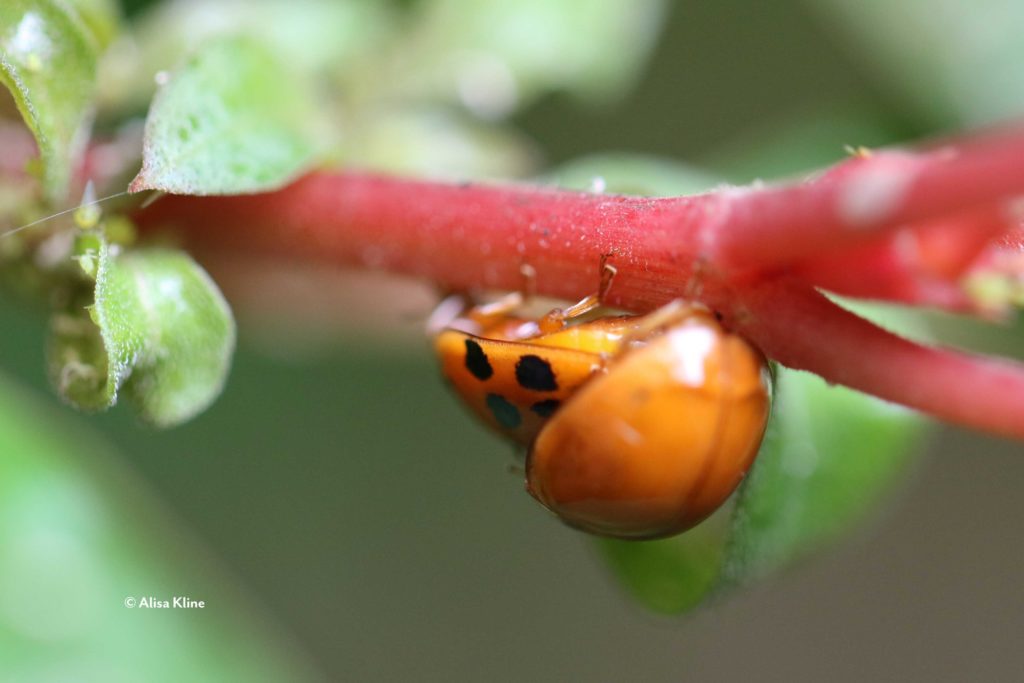
Below is a video of two ladybugs doing what ladybugs do. I stumbled on this pair because the hamelia in the small nature preserve I manage is thick with aphids.
Were I a gardener in search of a landscape that maximizes visual impact so as to demonstrate my utter control of “nature,” this would be a source of concern. But, dear reader, you know by now that this is not who I am. When I see huge numbers of aphids, I think, banquet and grab my camera.
Aphids are the sardines of the insect world, schooling in such overwhelming numbers that predators are certain to arrive. There is just so much to eat! And there are serious knock-on effects, too. But let’s start with the aphids themselves.
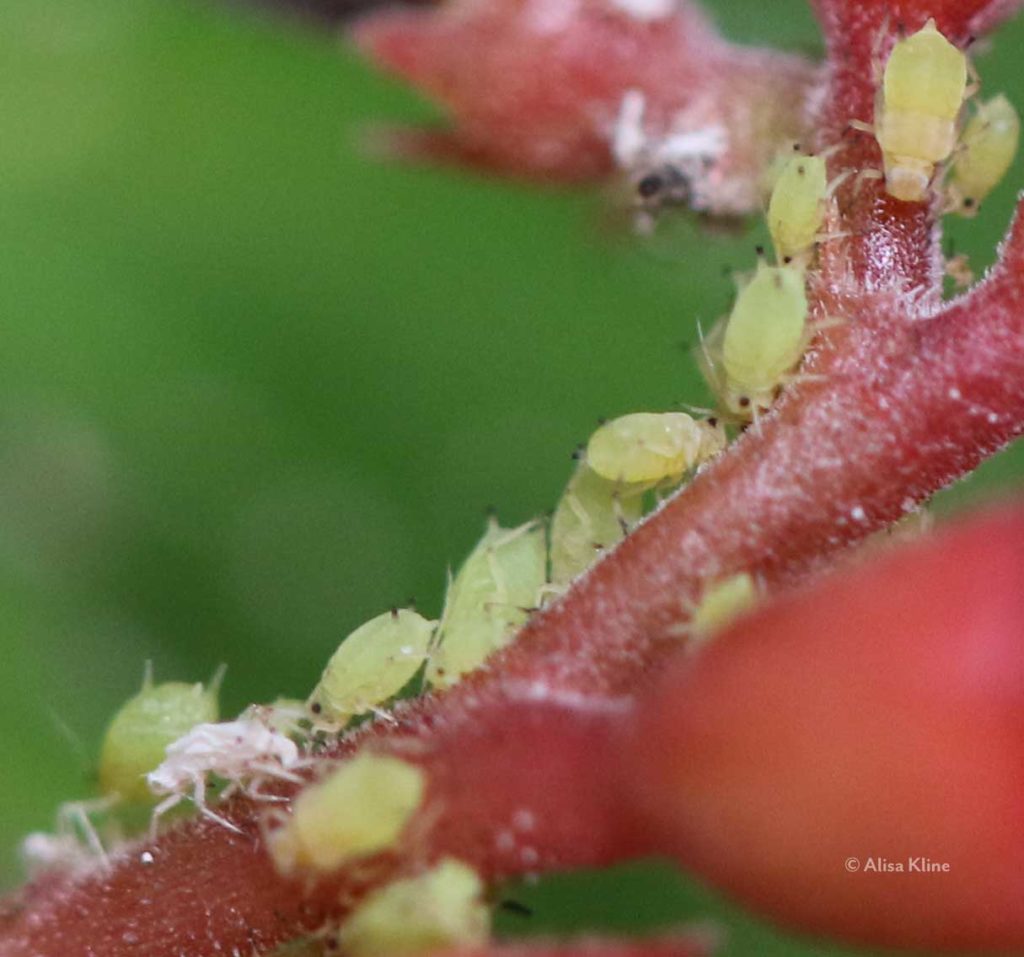
Notice the weird ghost aphid still standing in the line of living drinkers. This is the remnant skin of an aphid that grew too large and had to molt. An aphid will do this about four times during its life which can last anywhere from a week to a month.
Aphids use their somewhat fragile proboscises to slowly (sometimes taking an entire day) drill down into a plant’s phloem tubes which carry nutrients around the plant. They suck up this sap, which is made of sugar water, some dissolved organics, and a tiny bit of nitrogen, which the aphids require.
Once tapped in, the aphid doesn’t move if it can help it. It becomes a tiny tanker truck filling up over and over again in order to get enough nitrogen from this sugar-laden sap. All that sugar water has to go somewhere. And it does, right out the other end of the aphid. On a more or less continuous basis.
We now have two sources of tasty food building up in the same place. The first source is that juicy aphid herself. The second is all that sugar water.
Camera in hand, and a certain amount of knowledge in head, I started looking for ladybug larva.
It is considered best practices in the world of insects to birth your children as close as possible to their food source. Ladybug nymphs live on aphids (eating hundreds), so, ladybugs lay their eggs on the leaves of plants infested with aphids.
It was those nymphs that I wanted to photograph, but I was too early. Instead of voracious ladybug nymphs, I encountered the manufacturing process.
The video was taken a few days ago and since then, I have still not found any nymphs. To whit, the photo at the top of the page and this rather explicit view below.
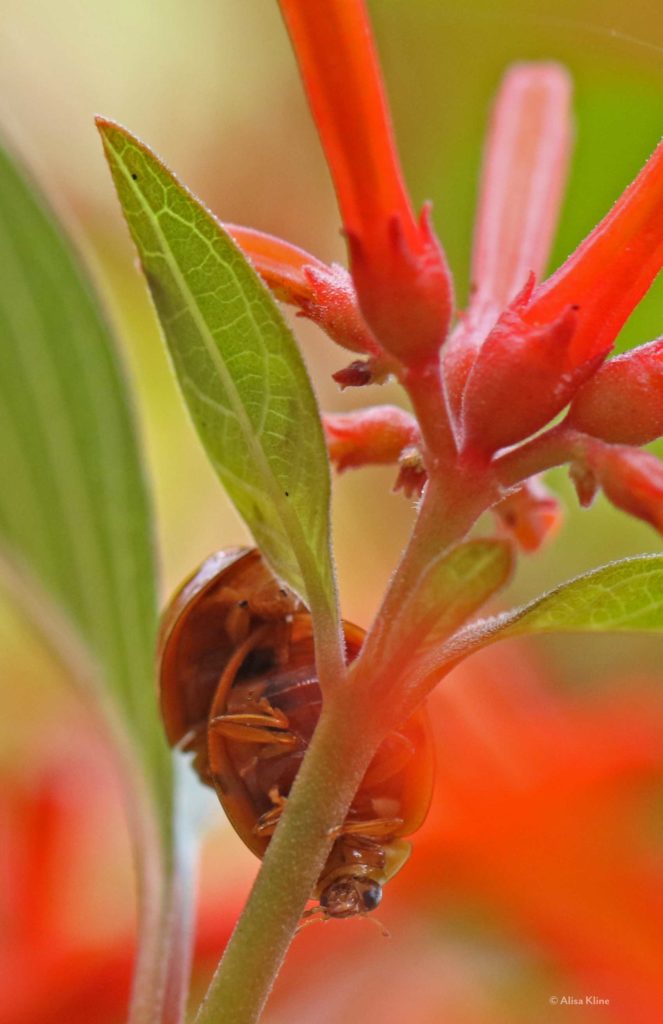
If you are of a delicate nature, avert your eyes, because this photo taken from underneath a mating pair of ladybugs gives a much clearer view of the goings on.
The sugar water those aphids are constantly pooping is piling up on the leaves, and small flies are landing on a leaf and sticking their tongue out to lap up sugar.
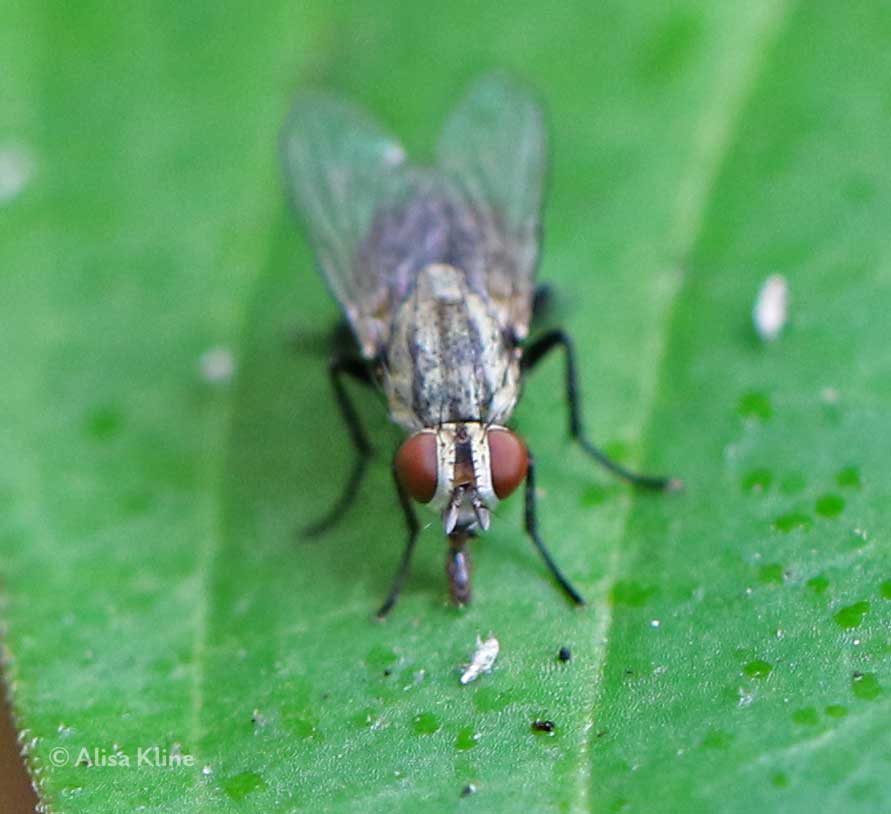
The fly is using its tongue to lap up sugar water aka, aphid poop.
Let’s recap: Aphids arrive and start sucking nutrients from the plant. Ladybugs, and other insects whose larva eat ladybugs arrive to lay their eggs on the leaves, and since most of them eat aphids, too, they snack as they go along.
The aphids aren’t worrying about all this. In addition to being sardines, aphids are also cows. They are so placid that ants farm them to get all that sugar water. The ants will gather up the aphids, protect them from all those predators and just run a sugar farm.
All that sugar water attracts all manner of flies. Free food will do that.
This is a lot of insect meat gathering on one small plant. It is inevitable that predators a bit higher on the food chain will arrive.
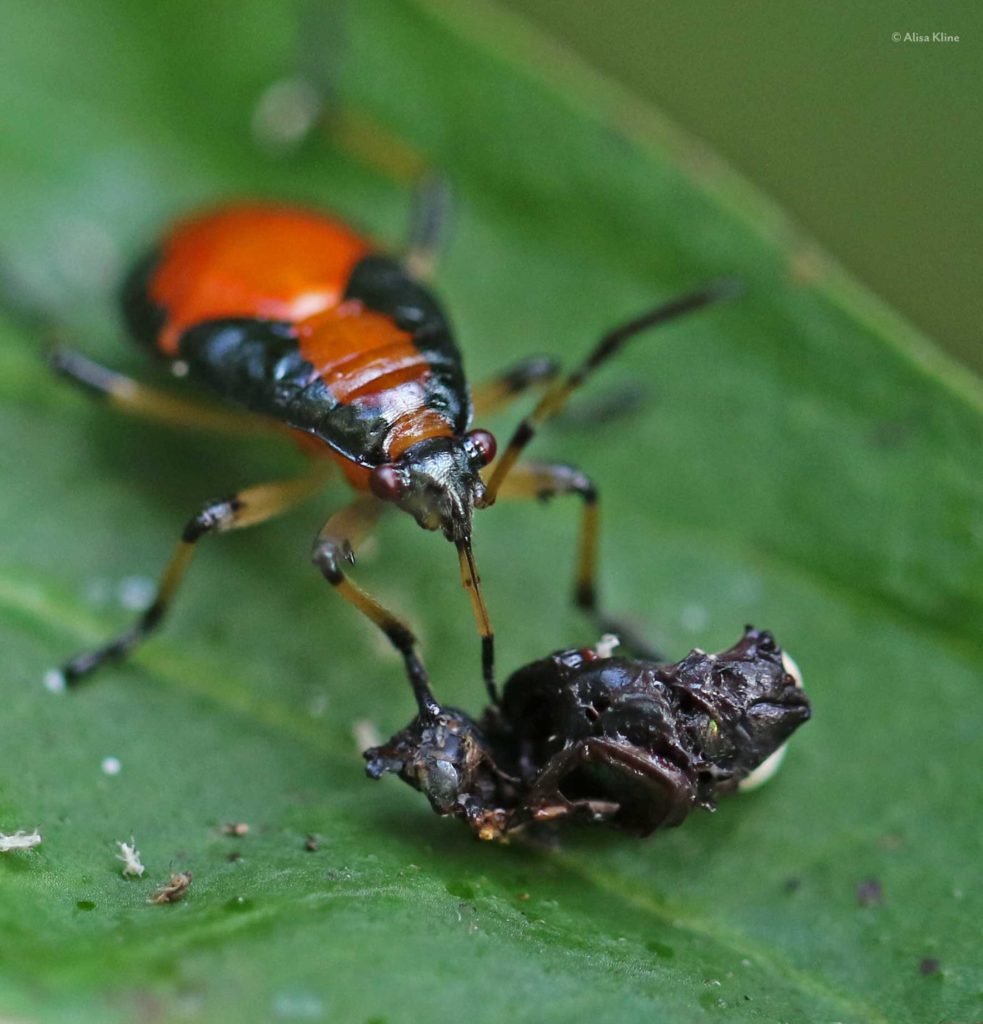
That someone might be this bordered plant bug who is sticking her proboscis into the husk of a fly that had been dead for a while by the looks of things.
I got video of that, too! Yes, it’s violent and kind of disgusting, but it is on such a tiny scale and everyone does have to eat, and how many flies do you really want around anyway.

